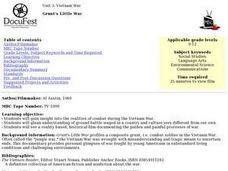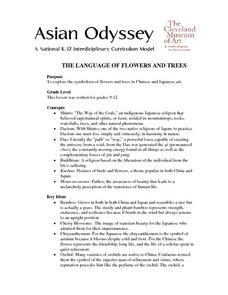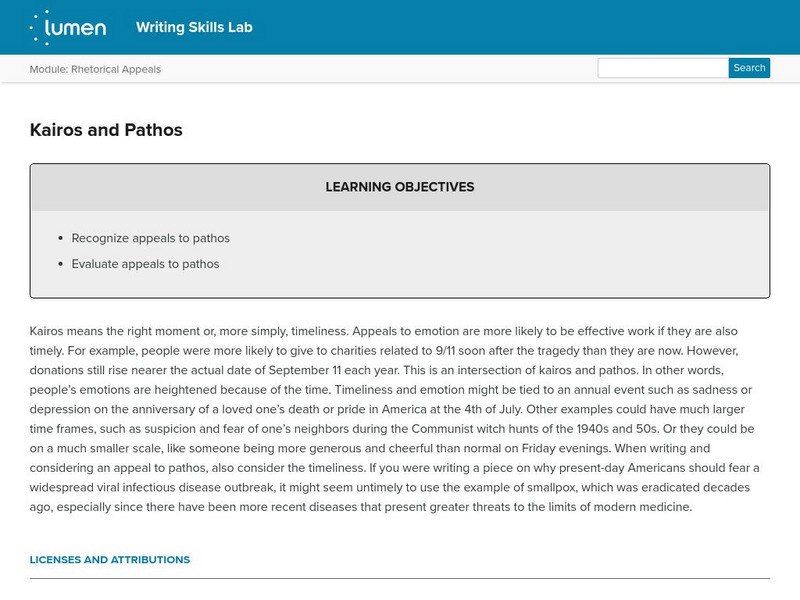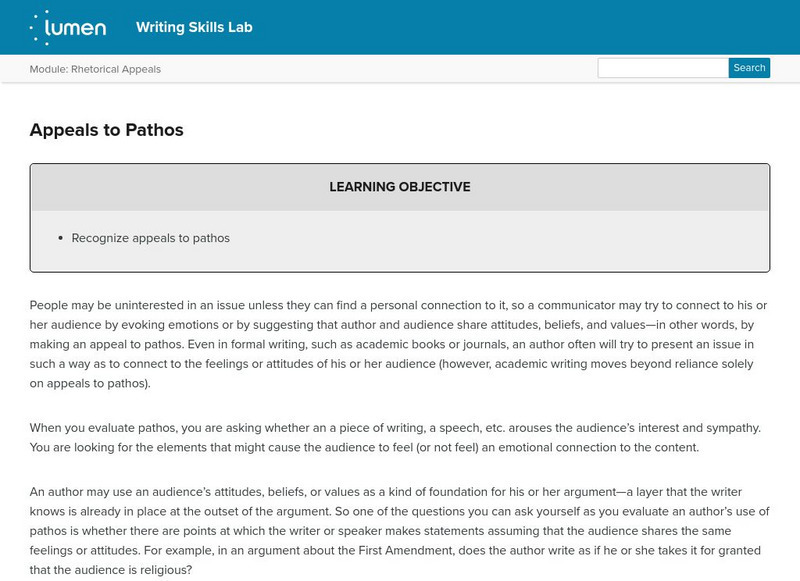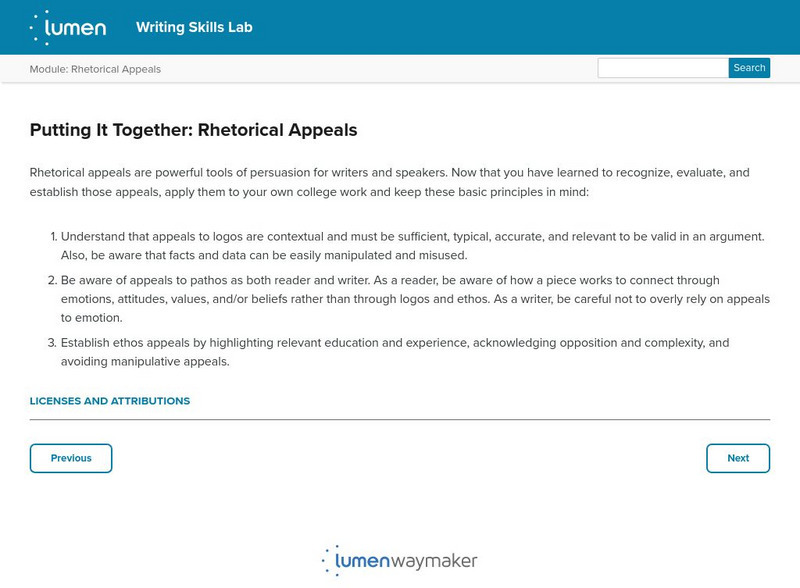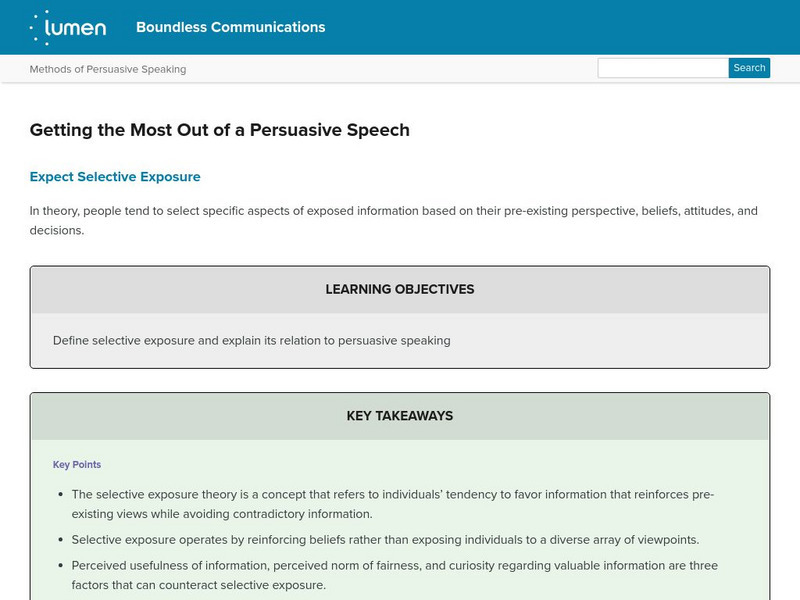Curated OER
Using Logos and Mission Statements to Communicate Sustainable Forestry Information
Young scholars survey forestry foundations to see how they represent important information into their logos and mission statements. In this forestry lesson plan, students use the information to better understand visual representations...
Curated OER
Familial Relationships in Great Expectations: The Search for Identity
Students read the novel "Great Expectations" by Charles Dickens. In groups, they use the text to identify and describe family relationships in the book. Using this information, they compare and contrast how these relationships are...
Curated OER
How to Move the Crowd: The Persuasive, Powerful Rhetoric of Mark Antony -Folger Shakespeare Library
Tenth graders explore a close reading of the speeches of Brutus and Mark Anthony in 3.2. They identify the effects of the rhetorical appeals used. Students explore the variety of ways in which Anthony might have delivered the speech....
Curated OER
Political Cartoons: Thinking Broadly, Communicating Succinctly
High schoolers think broadly about the tsunami disaster and its aftermath through studying cartoons. Students critically think about the literary devices the authors/artists use, such as satire, metaphor and personification.
Curated OER
Managing the Teaching-Learning Process
Twelfth graders begin to recognize how 2,400 year-old dramas are applicable to their lives after reading OEDIPUS THE KING, AGAMEMNON, ANTIGONE, MEDEA, HIPPOLYTUS, and FROGS.
Curated OER
Grunt's Little War
Students view a film about the role of the soldier during the Vietnam War. They discover what it was like to fight a war against a culture so unlike our own. They answer questions to complete the lesson plan.
Curated OER
The Language of Flowers And Trees
Learners explore the symbolism of flowers and trees in Chinese and Japanese art. This lesson meets state standards and includes two possible lesson extensions or lesson enrichments.
Lumen Learning
Lumen: Rhetorical Appeals: Kairos and Pathos
This lesson focuses on appeals that use both Kairos and Pathos, appeals to emotion (pathos) are more likely to be effective work if they are also timely (kairos).
Lumen Learning
Lumen: Rhetorical Appeals: Appeals to Pathos
This activity focuses on appeals to pathos; to connect to the audience by evoking emotions or by suggesting that author and audience share attitudes, beliefs, and values.
Lumen Learning
Lumen: Rhetorical Appeals: Manipulative Appeals to Pathos
This lesson focuses on the manipulative appeals to pathos, trying to unfairly play upon the audience's feelings and emotions through fallacious, misleading, or excessively emotional appeals.
Lumen Learning
Lumen: Putting It Together: Rhetorical Appeals
This lesson brings together the rhetorical appeals including Logos, Pathos, and Ethos and how to identify and apply each. Click the Next link for more information.
Royal Shakespeare Company
Royal Shakespeare Company: Julius Caesar Teacher Pack
This intensive study of Julius Caesar contains detailed plans to use while reading or watching Julius Caesar. Even though these plans revolve around the 2017 production of Julius Caesar by the Royal Shakespeare Company, the lessons can...
Lumen Learning
Lumen: Boundless Communications: Getting the Most Out of a Persuasive Speech
This lesson plan focuses on presenting a good persuasive speech. It discusses the selective exposure theory, kinds of appeals, and expectations.
Lumen Learning
Lumen: Writing Skills: Tone, Language, and Appeal
This lesson focuses on using tone, language, and appeal to recognize and evaluate rhetorical approaches to building common ground. RI.9-10.4 word meanings/impact of choice
Other popular searches
- Ethos Pathos Logos
- Rhetoric Logos Pathos Ethos
- Teaching Ethos Pathos Logos
- Ethos Logos and Pathos
- Ethos Pathos Logos Hamlet
- Ethos, Pathos, Logos
- Ethos Pathos Logos Essay
- Pathos the Farmer
- Ethos, Pathos, Logos Appeal
- Ethos Pathos Logos Appeal





